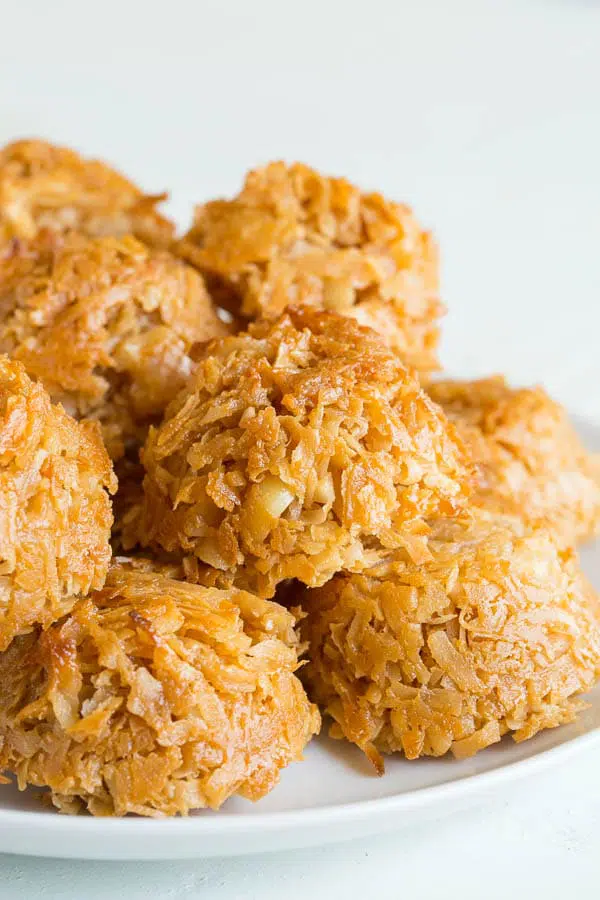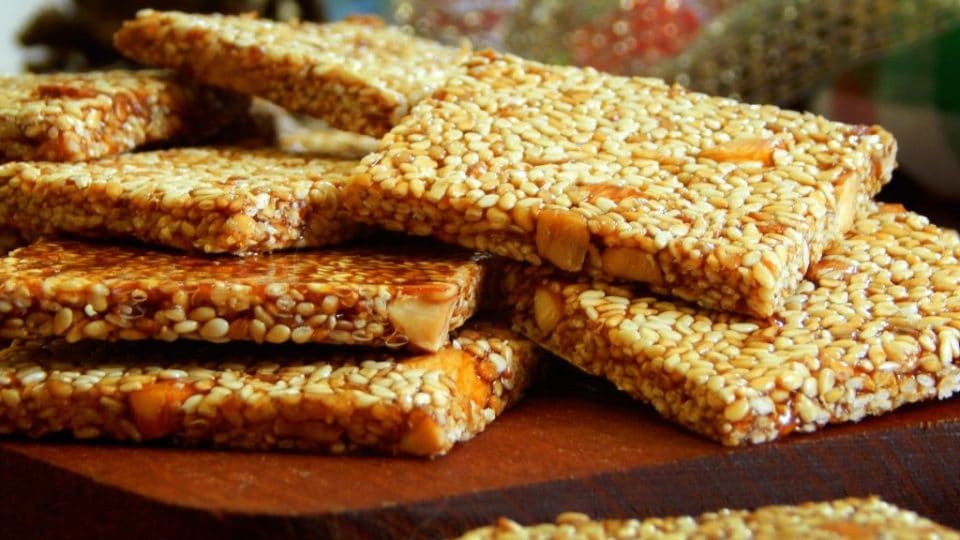A Traveler’s Guide to Traditional Ecuadorian Pastries and Desserts
Even as a long-time resident of Ecuador, a sometime restaurant cook, and a foodie in general, researching this article was a real eye-opener. For one thing, I don’t particularly like sweet stuff and don’t go out of my way to taste new types.
For another, most convenience stores here sell the same stuff you’ll find in Europe or North America: Nestlé chocolates, ice cream under the several brands owned by Unilever, and Oreo cookies. It is a minor tragedy that fine chocolate isn’t appreciated more here, especially given that Ecuador is one of the major producers of premium cacao beans.
Ecuadorians like their sweets but don’t seem to show much preference for traditional desserts. You find primarily Western-style cakes, donuts, and sweet buns at the three (!) bakeries within walking distance of my home.
Scratch the surface, and you soon realize there’s no reason for traditional Ecuadorian desserts and pastries to take a back seat to imported recipes. Let’s discover some of the best traditional Ecuadorian sweets and desserts.

1. Melcocha (Sugarcane Candy)

Melcocha is an incredible handmade candy made with panela. It is known as alfeñique in Spain and was initially called al-fanid in Moorish Iberia. In Ecuador, it’s primarily associated with the resort town of Baños but can be found nationwide.
Making melcocha by hand is hard work (look at the photo!). The recipe isn’t complicated, but it requires a lot of technique and strength. You start by squeezing out sugar cane (a major Ecuadorian crop) and mixing the juice with the sap of the guacimo tree as a binder. This is then boiled until a syrup is formed when the hard work of kneading and shaping it begins.
Of course, you probably don’t have a guacimo tree in your backyard, and even finding panela – completely unrefined sugar – may be a chore. If so, just use water and brown sugar. Producing this melcocha is a kind of cottage industry for several families.
2. Huevos Mollos (Creamy Candy Eggs)

Huevos mollos are sweet little balls of heaven. In Manabi, Ecuadorian families make a living preparing these yummy desserts alongside troliches, made with a similar recipe minus the egg.
Huevos mollos are easy to make and can be prepared well ahead of time, making them the perfect party food; milk and sugar are reduced over low heat, after which flour and egg yolks are whisked in to make a kind of sweet béchamel sauce.
Once this cools, the mixture becomes firm enough to shape by hand into egg shapes (hence the huevos in the name).
3. Espumillas

Espuma means “foam”, so espumillas are… little foams! What espumillas are is a glorious mix of meringue, syrup, and tangy fruit pulp. They’re often served in ice cream cones, which makes them a hit at picnics. For the fruit, guava is traditional, but nearly any kind of fruit should work just fine.
If you have a very, very sweet tooth, grab an espumilla, and tell yourself that all that fruit is soooo healthy!
4. Alfajores (Caramel Cookies)

If Ecuador has a national cookie, it has to be alfajores. They’re popular throughout Latin America, but we still think of them as ours, originating from the province of Manabí.
The star of the show here is the milk caramel filling (dulce de leche), which is complemented by dried shredded coconut. The biscuit dough is made from cornstarch, which adds a delicate texture.
Making the filling is a chore, but as with so much in the kitchen, you get out what you put in.
The hard work pays off when you finally have a delicious batch of alfajores to serve to your guests or to enjoy yourself!
5. Natilla (Cornstarch Custard)

Compared to standard custard (or crème anglaise, if you prefer), the Ecuadorian version is definitely on the firm side. In fact, it’s so solid that it can be cut into blocks for serving. The consistency depends on how much cornstarch you add; egg yolks are optional here.
One variety, mazamorra de choclo, uses whole maize instead of cornstarch, which is even weirder than it sounds but tastes lovely. In Ecuador, the custard is served either as is or as an accompaniment to some other dessert that could use a bit of lubrication, perhaps a fig or guava cake.
6. Helado de Paila (Paella Pan Ice Cream)

Depending on which neighborhood we’re talking about, it’s not uncommon for Ecuadorian families to sell helados (ice creams or popsicles) from their front porches. These typically consist of little more than fruit juice or soft drinks frozen onto a stick.
But helado de paila is an entirely different thing. Before electrical refrigeration, this traditional ice cream was made in the highlands near Ibarra from naturally occurring ice harvested from mountainsides and the slopes of volcanoes.
A wide pan was placed over the ice and filled with freshly squeezed fruit juice, which had to be beaten continuously to break up the ice crystals, in much the same way as ice cream machine does today.
The modern recipe, which includes egg whites, hasn’t changed much from the original, and authentic helado de paila is still made by hand today.
Done right, the resulting dessert has a very smooth texture and an absolute ton of natural, unadulterated flavor.
7. Cocadas (Coconut Balls)

If coconuts and sugarcane grew abundantly in your neighborhood, you would inevitably figure out how to combine these into a delicious dessert, right? This is what happened in Esmeraldas province, though cocadas are made and enjoyed all over Ecuador today.
The preparation is very similar to huevos mollos: cook the milk and panela until it thickens, stir in the coconut (dry or fresh), and add a few eggs to create a viscous mixture you can shape by hand once it cools. Cocadas can be either white or dark brown, depending on what kind of sugar is used.
8. Turrón de Ajonjoli (Sesame Seed Praline)

It’s no secret that everybody likes crunchy food; an audible crack when you take a bite makes food taste better. Sesame seeds may be more closely associated with Asian cooking, but they’re also plentiful in Latin America.
When combined with dry caramel and (optionally) peanuts, this sweet and delicious snack results. When a quarter of an inch thick, these can be eaten on their own. Alternatively, they can be rolled more thinly for use as a garnish. Our suggestion: try both!
9. Come y Bebe (Fruit Salad)

I couldn’t resist including plain ol’ fruit salad on this list due to its expressive Ecuadorian name: come y bebe, meaning “eat and drink”. The other reason for its inclusion is that fruit salad in Ecuador is way more of an experience than you might expect.
Very little of the fresh produce sold here is of the cosmetically beautiful but ultimately flavorless kind found in most US supermarkets.
Ecuadorian pineapples have pale white flesh instead of yellow and remain green even when ripe, yet they’re incredibly sweet and juicy. The orito bananas used in a come y bebe may only be a few inches long, but these are packed with flavor and natural sweetness.
In short, an Ecuadorian fruit salad tastes terrific, and if you ever get the opportunity to try it – don’t miss out! You’ll be amazed at how different it is!
10. Chucula (Plantain Smoothie)

Have you ever had a plantain smoothie? Ever had a plantain?! They’re incredibly cheap (in Ecuador, 25 cents will get you a decent bunch), and what’s more, they’re incredibly nutritious.
Plantains may look like bananas, but don’t be fooled- they’re different. When ripe, they’re sweet but slightly tart, and they can’t be digested raw, so you’ll have to boil them briefly before making this rich milkshake-like concoction.
Milk, sugar, and spices are mandatory in a plantain smoothie, and many people add a bit of neutrally flavored cheese for additional creaminess. Wonderful!
With that, we come to the end of our tour of Ecuadorian sweets. From melcocha to chucula, we have surveyed a gamut of desserts rich in natural flavors from the heart of Ecuador. Time to gorge on plantain and panela and collapse into a glorious sugar coma. Want to join me?
Or, perhaps you didn’t see your favorite Ecuadorian Dessert on my list. In that case, please leave your suggestions below and share your ideas with our Chef’s Pencil community! I’m waiting to hear from you!
Related: Most Popular Ecuadorian Foods

Related: Most Popular Christmas Foods in Ecuador

Featured image depicting caramelized apples by Rinaldo Wurglitsch.
The post 10 Popular Ecuadorian Desserts and Sweets w/ Recipes appeared first on Chef's Pencil.
from Chef's Pencil https://ift.tt/CEMdShj
via https://chefsspenncil.blogspot.com

No comments:
Post a Comment